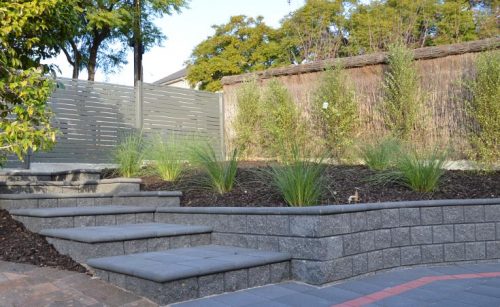This article discusses the cause, effect and treatment involved in slab edge dampness (S.E.D), or what is also commonly known in the industry as ‘edge wetting’.
Visual Landscape Gardening are considered experts in the field of slab edge dampness treatment across Adelaide and can assist in the prevention and treatment required to eliminate edge wetting.
If you’ve ever noticed or been concerned by the build up of salts, called ‘efflorescence’ leaching from your house or carport foundation, you are experiencing slab edge dampness, or edge wetting.
There is good reason to be concerned. If left untreated, slab edge dampness can cause fretting of the foundation to the point that the structural integrity of the foundation becomes compromised.
The accumulation of dampness, caused by the foundation drawing in moisture by capillary action, can cause lifting of tiles and other internal flooring such as parquetry and timber floating floors, and cause mould to flourish under carpets. Mould spores can then disperse into the air and have an impact on the health of the occupants in the house.
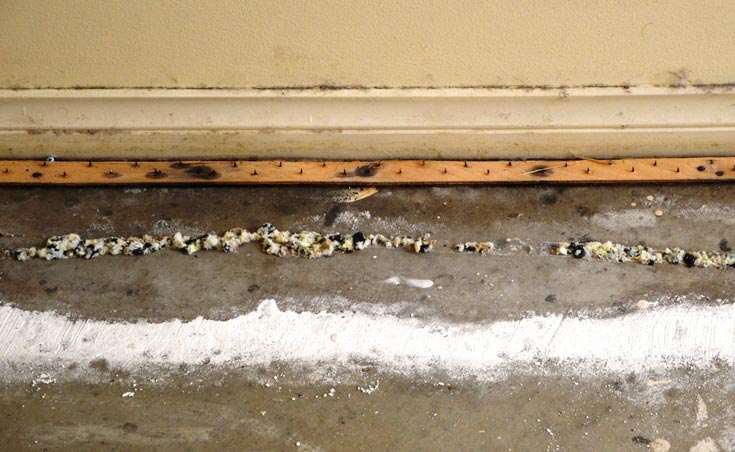
If you’re experiencing a musky smell in your house chances are you have problems with edge wetting.
What is Edge Wetting?
S.E.D. or slab edge dampness is the transfer of moisture from the soil, drawn in by capillary action, into the concrete foundation. This happens when the concrete is in direct contact with the soil. Slab edge dampness and salt deposit problems are more likely with reactive soils that have a high, heavy clay content; common throughout Adelaide, as opposed to soils containing free draining sand. This is not to say that the problem is not evident on sandy sites. Consider your foundation as a sponge and this will help to understand the process of slab edge dampness.
Contributing Causes of S.E.D?
Poor drainage can be a contributing factor causing slab edge dampness. Leaking or broken storm water drains and down pipes are also a contributor. Poorly prepared bases for paving and concrete can also contribute.
Licensed paving contractors or landscapers will ensure levels for concrete or paving around walls falls away from the foundation. In the event sub surface water reaches clay, it is directed away from the foundation edge with the same fall the concrete or paving has on it. The possibility of water entering between the foundation and the vapour barrier or forticon that the foundation is encased in is also eliminated.
Salt Damp Treatment – How To Avoid Edge Wetting
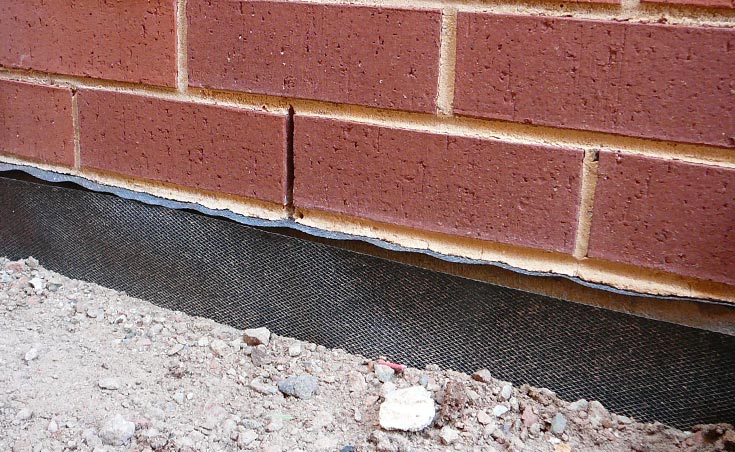
When preparing to pave around your house, it is essential to prepare the foundation for treatment and apply two coats of waterproof membrane as well as fit a 450mm damp proof membrane to the vertical edge of the foundation.
The ground must be excavated to find the orange vapour barrier or forticon that extrudes from the foundation. Vapour barriers should be maintained and not cut or damaged under any circumstance.
Soil should then be excavated in a way that the clay or soil has a positive fall away from the foundation. When dealing with high clay content soils, a minimum of 30mm fall away from the foundation for the first metre should be set.
It is essential that the clay be carefully removed from the vapour barrier that laps out, usually 200-300mm from the foundation trench.
When the top of the vapour barrier has been carefully removed of clay and other debris, two coats of waterproof membrane can then be applied and a 450mm damp proof membrane is lapped over the top of the vapour barrier and continued up the vertical edge of the foundation.
Quartzite quarry rubble, having a low salt content, as opposed to dolomite that has a high salt content is then spread on top of the damp proof membrane before compacted with a plate compactor. This process keeps soil and especially clay from direct contact with the vertical edge of the foundation. You will now be protected from S.E.D or edge wetting from underground soils.
Where S.E.D or edge wetting is already prevalent, this treatment and procedure will remedy the problem over a period of time, depending of the severity of the dampness, as the concrete dries.
Landscaping Tips To Prevent Slab Edge Dampness
Landscaping to your garden after construction, or alterations to your storm water can inadvertently change site drainage conditions allowing water to pond against a concrete slab. If you are paving a perimeter path around your house, ensure you have a positive fall away from your house of at least 30mm for the first metre.
In reactive soils, with a high clay content (prevalent throughout Adelaide suburbs) storm water pipes should have flexible connections to avoid breakage due to ground movement, allowing water to seep into the ground and waterlog the soil.
Avoid having garden beds against the foundation. Paving or concrete is recommended to achieve a positive fall away from the foundation. Agricultural pipes or other suitable drainage solutions should be installed around the outer edge of perimeter paving or concrete.
When landscaping Adelaide gardens, licensed landscapers should always be used to ensure the landscape design you desire takes water flow direction into account.
Book An Inspection Appointment With Repair Quote
To book a ‘Slab Edge Dampness Inspection’ including quote to repair the problem for just $165 (Incl. GST) simply complete the form below.
One of the trained specialists from Visual Landscape Gardening will then be intouch ASAP to organise a suitable time.


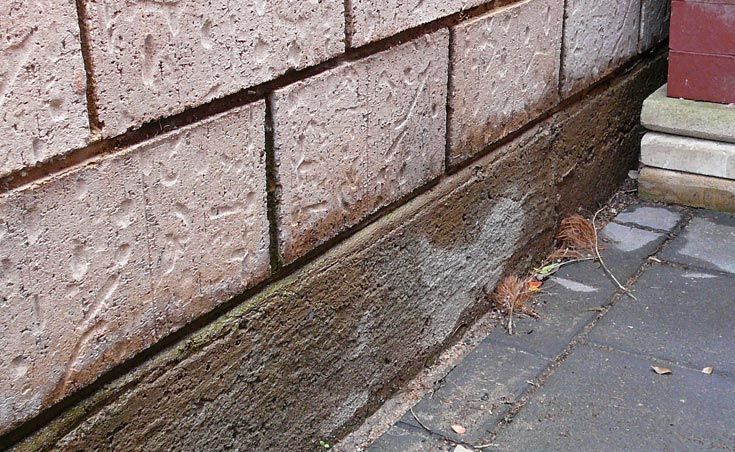
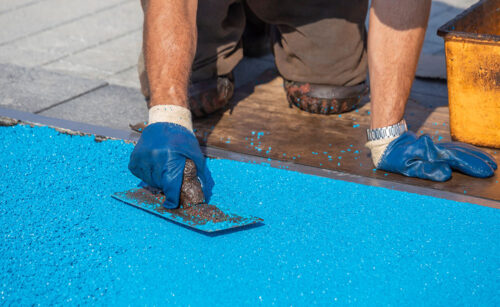 Wet Pour Rubber Flooring (Adelaide SA)
Wet Pour Rubber Flooring (Adelaide SA)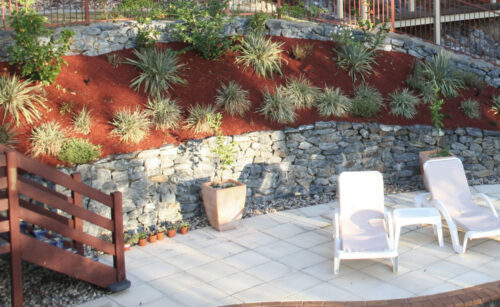 Rubber Mulch & Soft Fall Rubber Surfaces Adelaide
Rubber Mulch & Soft Fall Rubber Surfaces Adelaide Courtyard Garden Makeover Unley
Courtyard Garden Makeover Unley